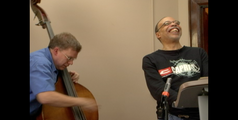Improvising Chicago
Tamas Dobozy
Published: 2009-12-05
Aldo Rossi's The Architecture of the City articulates how civic space intersects with collective agency: "One can say that the city itself is the collective memory of its people, and like memory it is associated with objects and places [. . .] The collective memory participates in the actual transformation of space in the works of the collective, a transformation that is always conditioned by whatever material realities oppose it" (130). Rossi's contention—that the development, or "transformation," of urban space is accomplished by a collective deploying memory in its struggle with material reality—is the scene of Stuart Dybek's southside Chicago in, The Coast of Chicago. Where this short story cycle deals with musical improvisation it dramatizes Rossi's contention by showing how memory not only resists "material realities"—in this case the demolition of southside neighborhoods initiated by Mayor Daley—and not only preserves ethnicity—especially the Polish and Chicano diasporas Dybek writes about—but also enables what Thomas S. Gladsky has called "a trans-ethnic urban America [. . .] a diverse cultural landscape where ethnicity transcends national origins but remains vital" (117). Dybek's ethnic self is a processual subjectivity, improvisatory rather than definitive, "based [less] on national origins [than] on a shared sense of ethnicity as a condition of Americanness" (Gladsky 115). In the story "Blight" characters inhabit a neighborhood where "the city was tearing down buildings for urban renewal and tearing up streets for a new expressway, and everywhere one looked there were signs in front of the rubble reading: sorry for the inconvenience / another improvement / for a greater Chicago / Richard J. Daley, Mayor" (44). Yet it is this demolition of monuments, this assault on what Rossi calls "the Locus" ("a relationship between a [. . .] specific location and the buildings that are in it" 103), this demonstration of the materiality of civic space that allows the characters to reawaken to the transformative potential of community: "It was the route we usually took to the viaduct, but since blight had been declared we were trying to see our surroundings from a new perspective" (45). Awakening to "new perspectives" as a result of civic "improvement" Dybek's characters cast off a determinate subjectivity and realize the action of the collective in the determination of civic reality. When the characters go to the viaduct off Douglas Park and begin improvising a "blues" by "slamming an aerial or board or chain off the girders, making the echoes collide and ring [. . .] clonk[ing] empty bottles and beer cans [. . .] shouting and screaming like [. . .] Howlin' Wolf" (48) they are joined by "a train [. . .] booming overhead like part of the song" (48)and by "a gang of black kids" at the other end of the viaduct who "stood harmonizing from bass through falsetto just like the Coasters, so sweetly that though at first [the characters] tried outshouting them, [they] finally shut up and listened, except for Pepper keeping the beat" (48). The fragments of the city are used to enable collectivity, to remember what the city is for. The attempt of civic authority to wrest memory from its inhabitants by making it impermanent, fragmentary, demolished, is precisely what restores agency by giving way to a subjectivity that is the scene of salvage. In this way communities become aware of their ability to define landscape, to alter "perspective" and take possession of space, to regard ethnicity as a common instrument, as if out of material destruction it might be possible to make of memory something more powerful than memorization, defying institutional permanence—civic or ethnic—for a community that is elastic, responsive, aware of its relationships with and within the spaces it inhabits.
Available Files
-
Improvising_Chicago.pdf
Download


